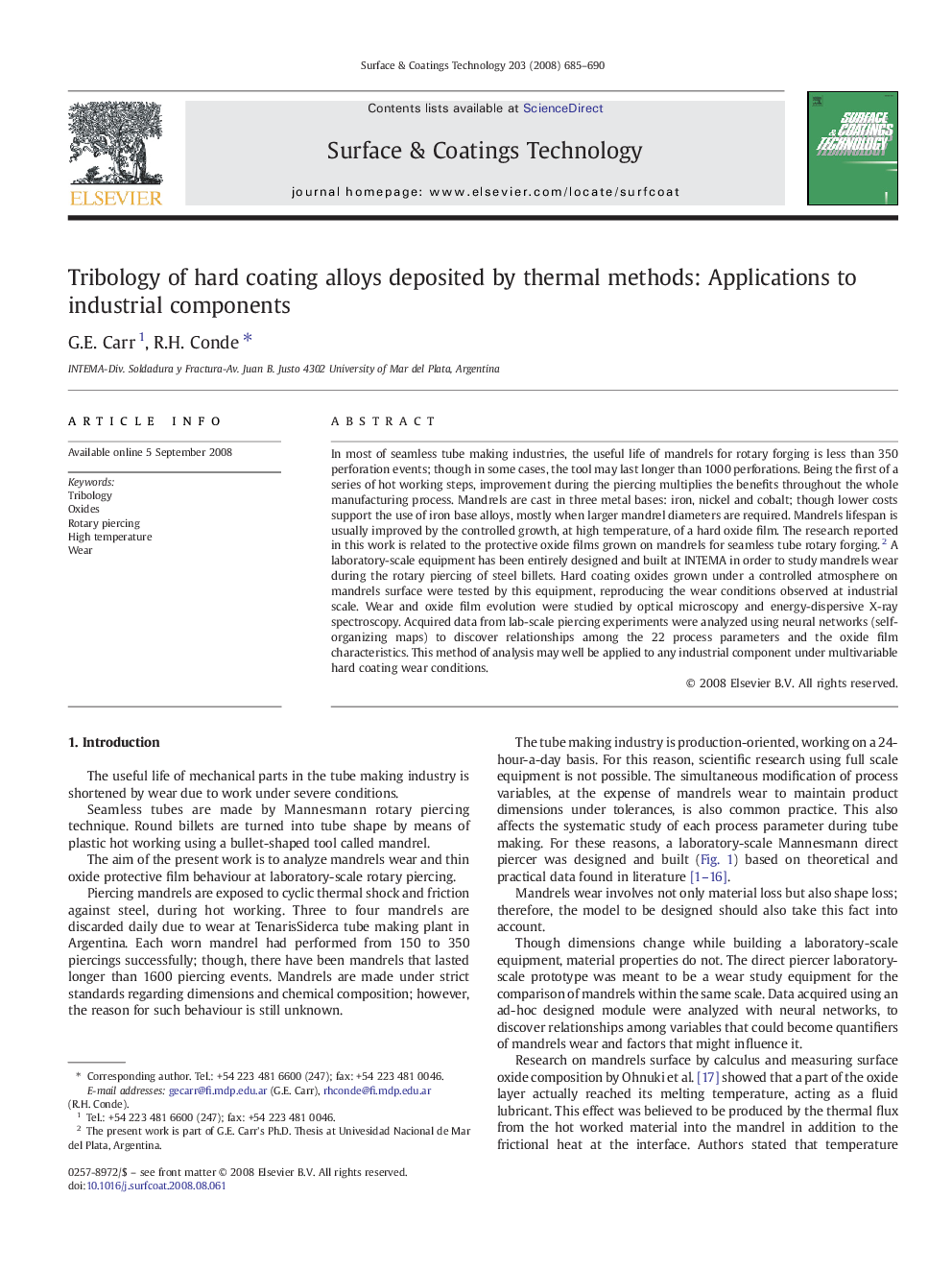| Article ID | Journal | Published Year | Pages | File Type |
|---|---|---|---|---|
| 1660024 | Surface and Coatings Technology | 2008 | 6 Pages |
In most of seamless tube making industries, the useful life of mandrels for rotary forging is less than 350 perforation events; though in some cases, the tool may last longer than 1000 perforations. Being the first of a series of hot working steps, improvement during the piercing multiplies the benefits throughout the whole manufacturing process. Mandrels are cast in three metal bases: iron, nickel and cobalt; though lower costs support the use of iron base alloys, mostly when larger mandrel diameters are required. Mandrels lifespan is usually improved by the controlled growth, at high temperature, of a hard oxide film. The research reported in this work is related to the protective oxide films grown on mandrels for seamless tube rotary forging.2 A laboratory-scale equipment has been entirely designed and built at INTEMA in order to study mandrels wear during the rotary piercing of steel billets. Hard coating oxides grown under a controlled atmosphere on mandrels surface were tested by this equipment, reproducing the wear conditions observed at industrial scale. Wear and oxide film evolution were studied by optical microscopy and energy-dispersive X-ray spectroscopy. Acquired data from lab-scale piercing experiments were analyzed using neural networks (self-organizing maps) to discover relationships among the 22 process parameters and the oxide film characteristics. This method of analysis may well be applied to any industrial component under multivariable hard coating wear conditions.
